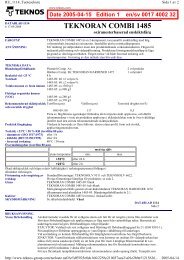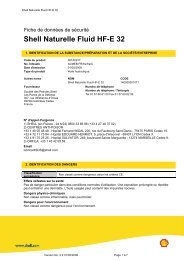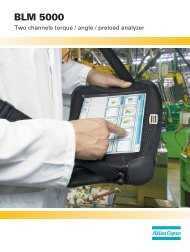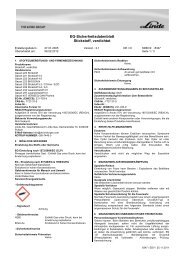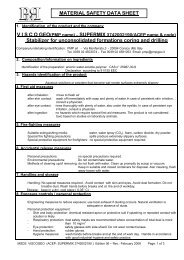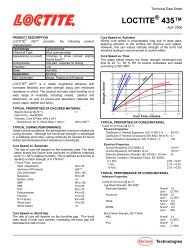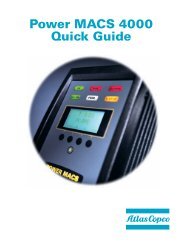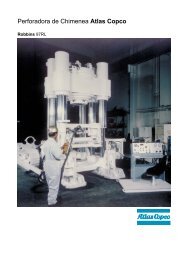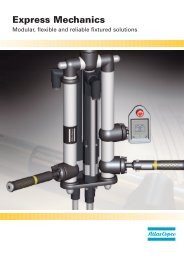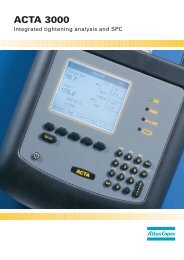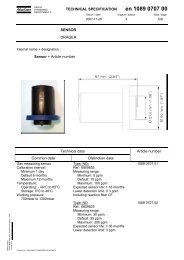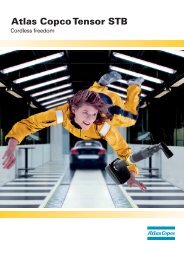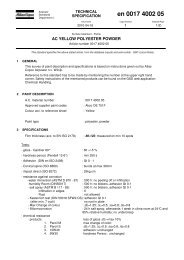Ergonomics - Atlas Copco
Ergonomics - Atlas Copco
Ergonomics - Atlas Copco
You also want an ePaper? Increase the reach of your titles
YUMPU automatically turns print PDFs into web optimized ePapers that Google loves.
The average sound pressure level from<br />
the five microphones is the base figure for<br />
the declared noise emission value.<br />
In the standard ISO 15744 the formula for<br />
calculation of sound power level is given as:<br />
L w = L p + 10 lg (S/S 0 )dB(A), where<br />
L w = sound power level in dB(A)<br />
L p = average sound pressure level<br />
from 5 microphone positions, in dB(A)<br />
S 0 = the surface of the hemispheri-<br />
cal/cylindrical control surface, where<br />
sound is passing, in m 2<br />
S 0 = reference surface of 1 m 2<br />
S 0 is 4л m 2 , therefore 10 lg (4л) = 11<br />
A sound power value is 11 dB(A) higher<br />
than the corresponding average sound pres-<br />
sure value.<br />
Loading of the machine<br />
Some machine types are run on a loading<br />
device while others are not. When a loading<br />
device is used, the noise it generates should<br />
be at least 10 dB lower than the noise from<br />
the power tool being tested, in each octave<br />
band that influences the dB(A) value.<br />
Declaration of noise emission values<br />
The noise test standard gives the type of test<br />
procedure that should form the basis of the<br />
declared value. The standard also gives a<br />
method of coping with uncertainties arising<br />
from variations due to the test method and<br />
variations in production. The total uncer-<br />
tainty declared together with the measured<br />
value is 3 dB(A). You can always argue that<br />
3 dB(A) is a very approximate figure, and<br />
that for some tools the uncertainty is less. It<br />
is also true that there are other international<br />
declaration standards where the tolerance is<br />
calculated for every machine.<br />
Noise control<br />
Noise hitting the human ear drum or a<br />
microphone is almost always a combina-<br />
tion of sounds from several sources. When<br />
controlling noise it is important to know the<br />
sources. It is even better if the relative loud-<br />
ness of the sources is known because this<br />
knowledge allows priorities to be set.<br />
If, for example, there are two sources with<br />
the same level and it is possible to remove<br />
one completely, the total level will only be<br />
decreased by 3 dB. If there are a number of<br />
sources and one is removed it might fail to<br />
show up in the readings altogether, depending<br />
on its frequency and relative loudness. When<br />
testing in the laboratory, it is recommended<br />
that the sources are identified in the machine<br />
and, if possible, isolated for a more accurate<br />
interpretation. Modern measuring equipment,<br />
such as intensity meters, can be very useful.<br />
119



